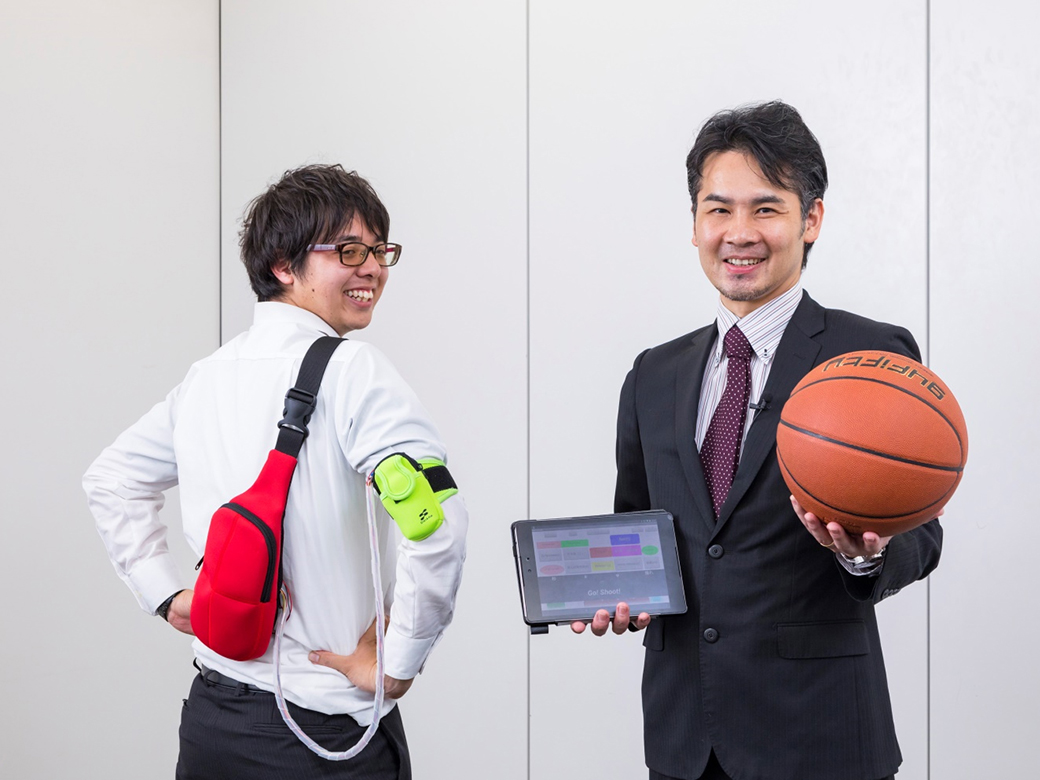Waseda Frontline Research Vol. 16: Assistive robot technology to expand human functions (Part 3 of 4)
Wed, Sep 6, 2017-
Tags
Hiroyasu Iwata, Professor, Faculty of Science and Engineering, Waseda University
Global Robot Academia Laboratory Director
Specialization: Medical welfare robotics and mechatronics
Sports technique learning assistive system for the 2020 Tokyo Olympics
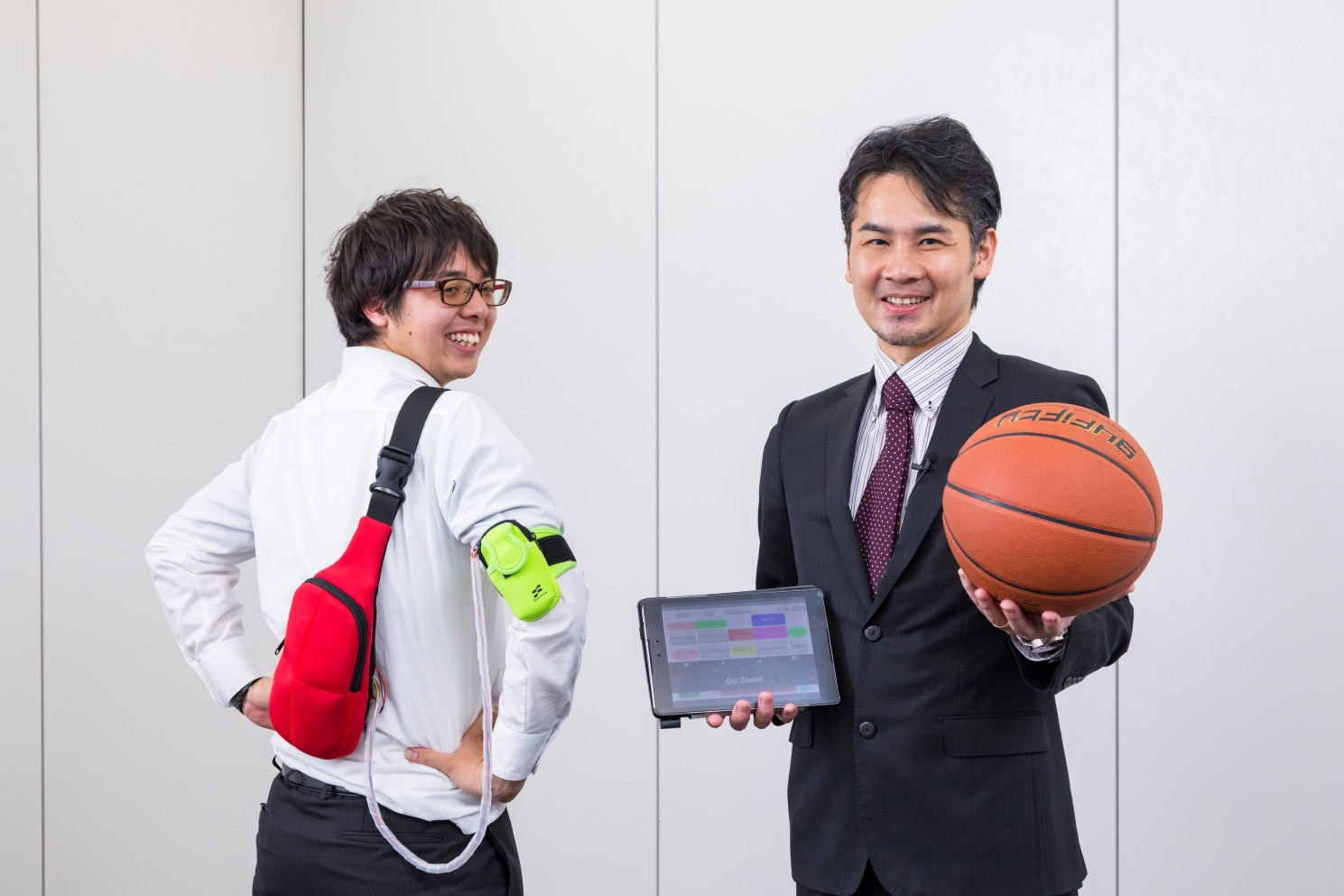 Professor Iwata is working on various research around the concept of human assistive robot technology (RT) to expand physical performance and functions. The third part of the series covers the development of a system to assist technique learning in sports, looking ahead to the Tokyo Olympics.
Professor Iwata is working on various research around the concept of human assistive robot technology (RT) to expand physical performance and functions. The third part of the series covers the development of a system to assist technique learning in sports, looking ahead to the Tokyo Olympics.
Robot technologies to enhance human technique
The movements of top athletes in all sports are beautiful. This is perhaps because there is no unnecessary motion and their movements are on point. In fact, getting better at sports requires learning the most appropriate forms. For example, suppose someone wants to score shooting free throws in basketball with a high percentage. At first, beginners may not know how to throw a ball at all. However, a free throw can be broken down into four movements: hold, set, release, and follow through. To hold the ball, you take the ball with both hands. Then, raise your arms and keep them elevated to set the ball. Next, push the ball away with your dominant arm for release. Finally, project the ball away from your body to follow through. The trajectory of a free throw depends on factors such as the initial velocity of the ball, its elevation angle on the sagittal plane (the plane representing the shooter’s movement in the back-front direction), the angle deviation in the left or right direction on the frontal plane (the plane representing movement in the left-right direction), and the height of the ball from the ground at the moment it leaves the hand.
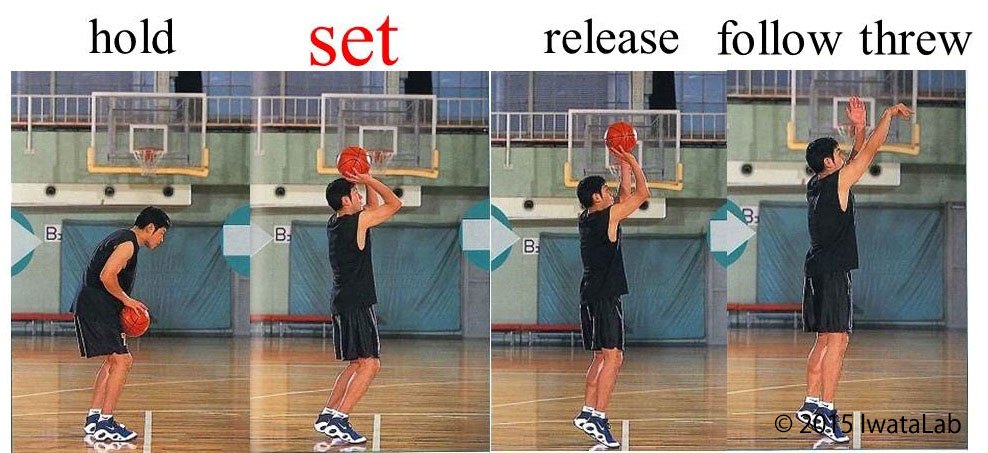
Photo: The series of movements of a free throw (Source: Iwata Laboratory)
To throw the ball into the basket, you need to accurately adjust factors such as the lifting height of the arms, the throwing angle, and the velocity of the ball. What combination of these parameters will send the ball into the basket? Mathematical analysis can find the ideal answer to this question. That is why we developed a technology that allows a player to acquire the ideal form during practice which was found through analysis. For players who want to improve their technique, this system points out and corrects issues of which they may be unaware of, deviating parameters, and any lacking factors.
Reducing variations in form
Making free throws in basketball is just an example. Each sport probably has its own ideal forms. If players can recognize the gap between the ideal form and their actual movements, they can correct their movements and acquire the proper form. The set form corrective device is a device that helps you to master the ideal form without any assistance from others.
For example, the key point in free throws is the stance at the moment when they set the ball. Players train so that the shoulder joint angles on the sagittal plane and frontal plane will be in a certain range. To be specific, equipment combining a three-axis acceleration sensor and two-axis angular sensor is used. It automatically judges whether the body stance is correct. If not, it notifies players with a sound. The player then changes their stance so that the sound will stop, and they train repetitively to direct their attention to the somatic senses at that moment. This allows them to assume the ideal stance even without the set form corrective device or sound notification.
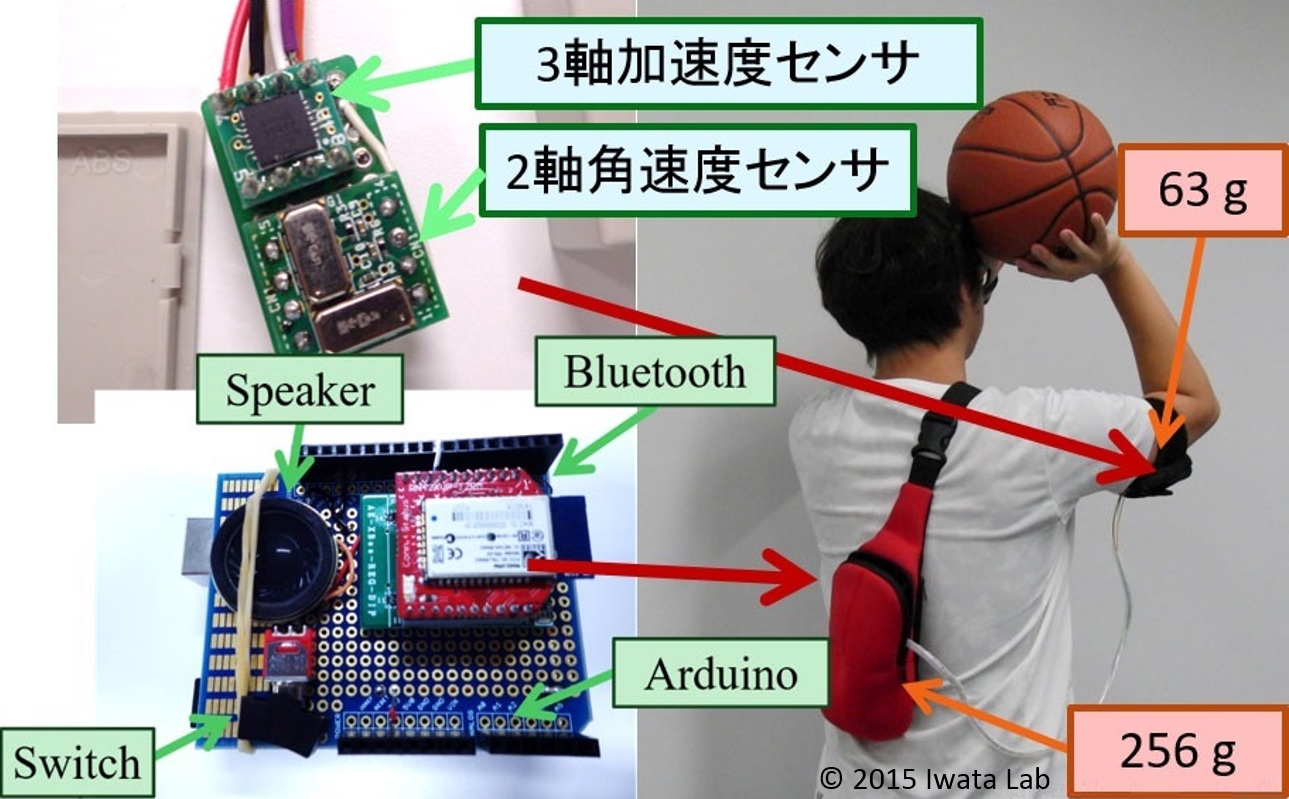
Photo: Set form corrective device for free throws (Source: Iwata Laboratory)
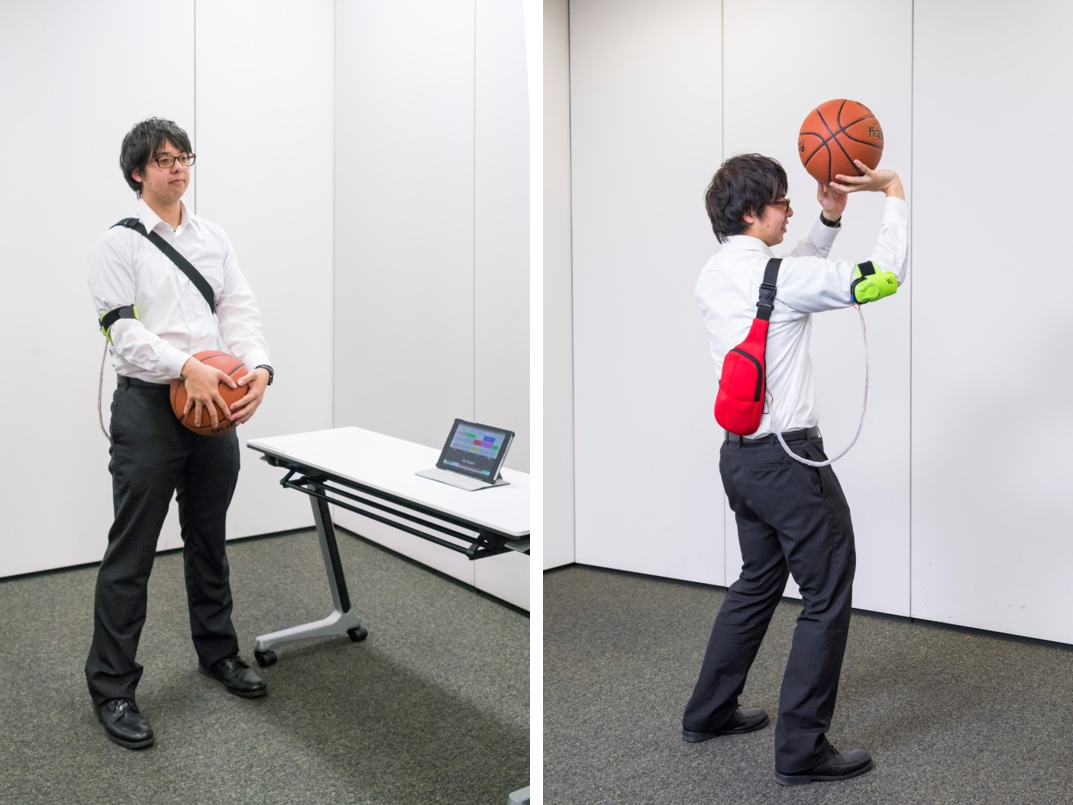
Photo: A player wearing the free-throw corrective device. It automatically judges the body stance and plays a sound notification.
Systems that enable us to learn the correct form using biofeedback can be applied to sports other than basketball as well. For example, when volleyball players receive a ball, they need to move so as to send it accurately to a setter. The key point here is how to angle both elbows. For this, we decided to developed a system in which the player wears a HMD (head mounted display: a goggle-shaped monitor) and practices receiving techniques using VR (virtual reality). In this type of training, the player actually assumes the receiving stance and responds to a ball spiked by an attacker just behind the center net in the display. Sensors embedded in the receiving board monitor whether the receiving stance is best for the direction the ball is coming from and the position of the setter, and the display indicates how the player should change their stance. Since the system does not require a ball, it is possible to train individually in a house or other small space.
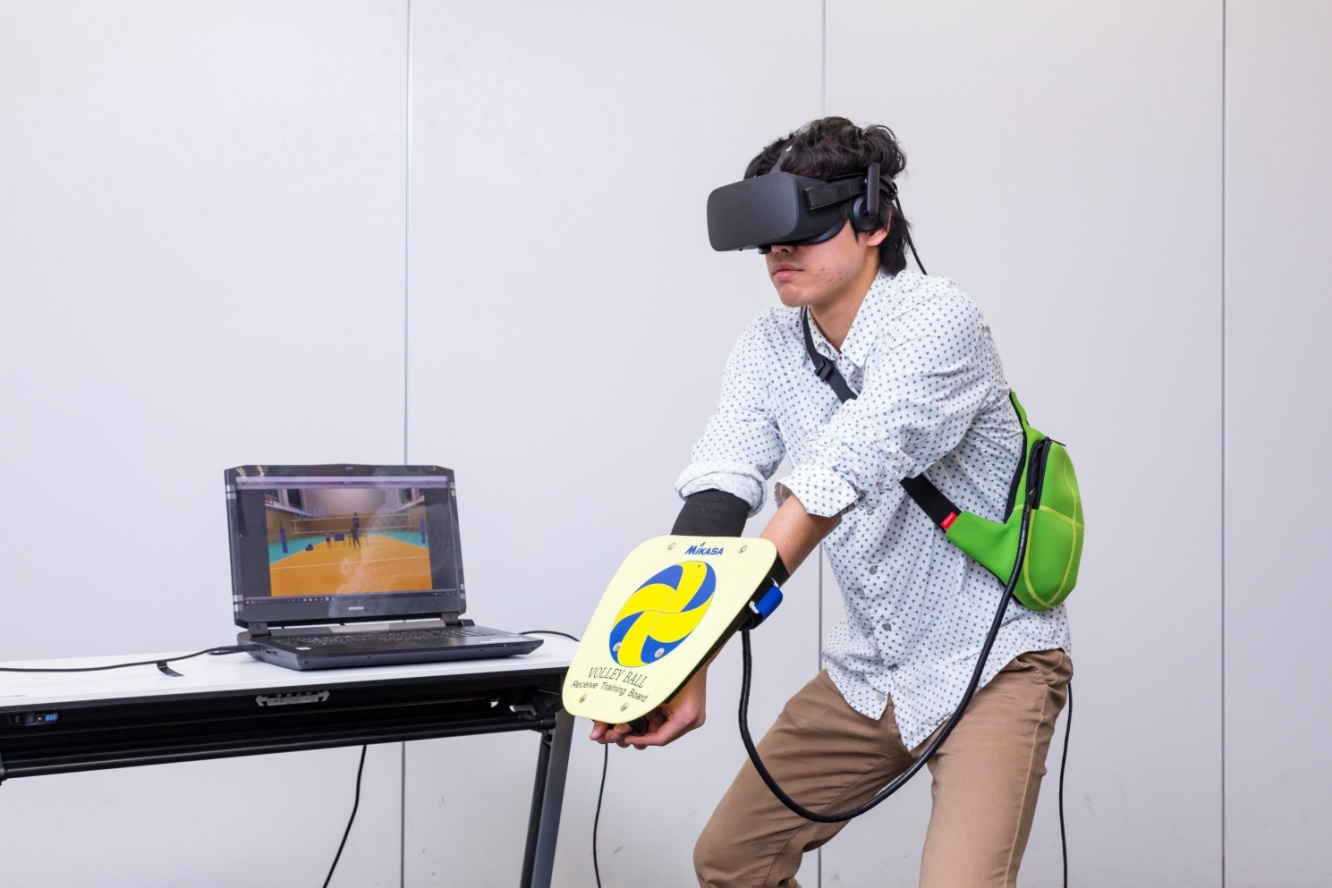
Photo: VR (virtual reality) and a person wearing a body sensor. When the player wears the customized goggles, their field of vision is filled with an image like the one shown on the laptop on the desk.
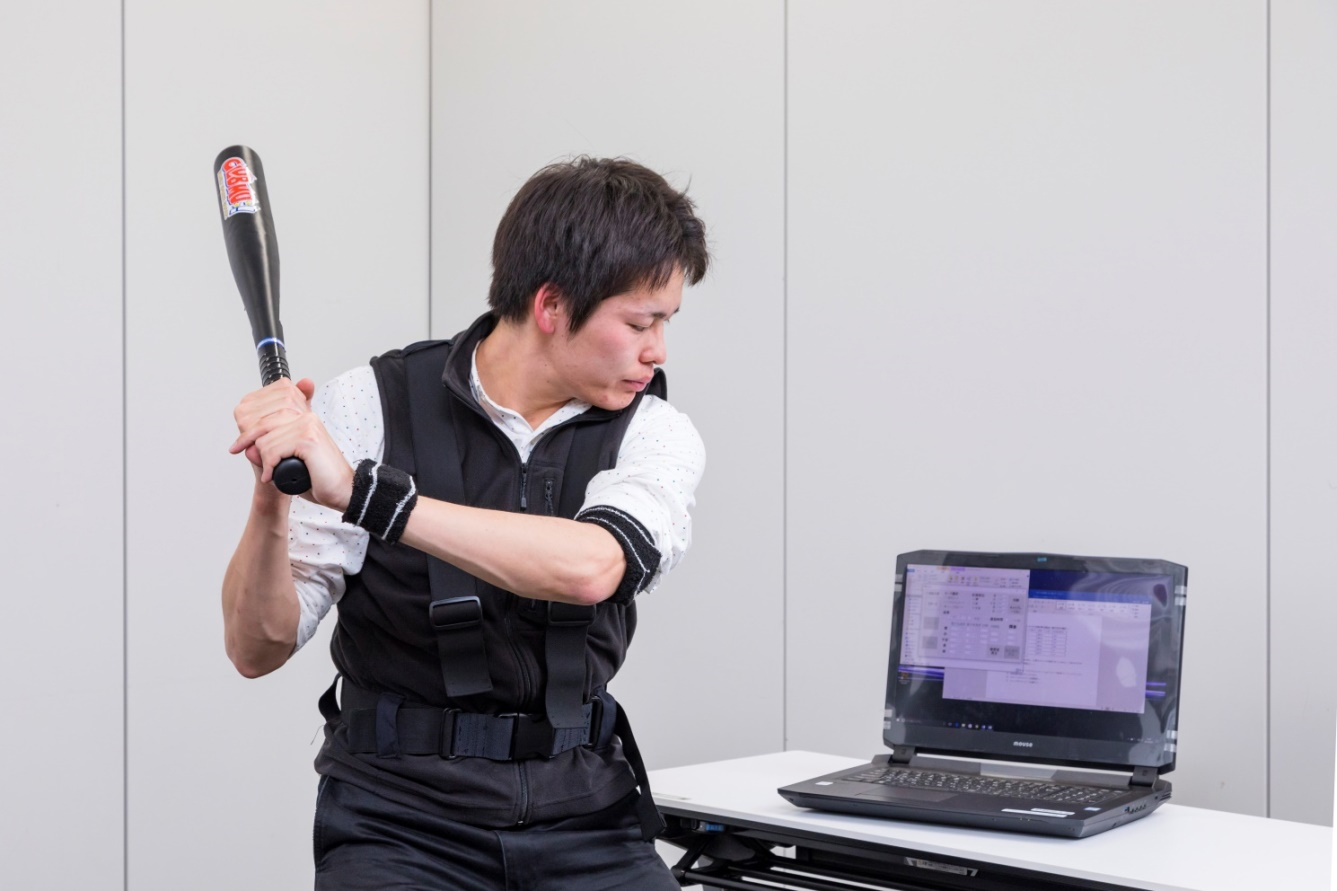
Photo: A batter-speed assistive device, which assists in a kinetic chain series, including body stance-auditory biofeedback.
Integrating technologies to lead to a solution
Currently, the set form corrective device is only effective for beginner players at the high school level or lower. But in the future, if we precisely analyze the movements of top athletes and increase the number of sensors and measured parameters to recognize subtle differences in movement, it might be possible to apply this device even to top athletes.
Our goal is to help Japanese athletes who will compete in 2020 Tokyo Olympics. We want to support them so that Japan, as the host country, can earn around 50 gold medals. This may sound like a dream, but the joy of craftsmanship lies in making possibilities that would be nice or helpful to have into reality. I want to invent things that benefit society. I have always kept this in mind, and it is the driving force behind my research.
Profile
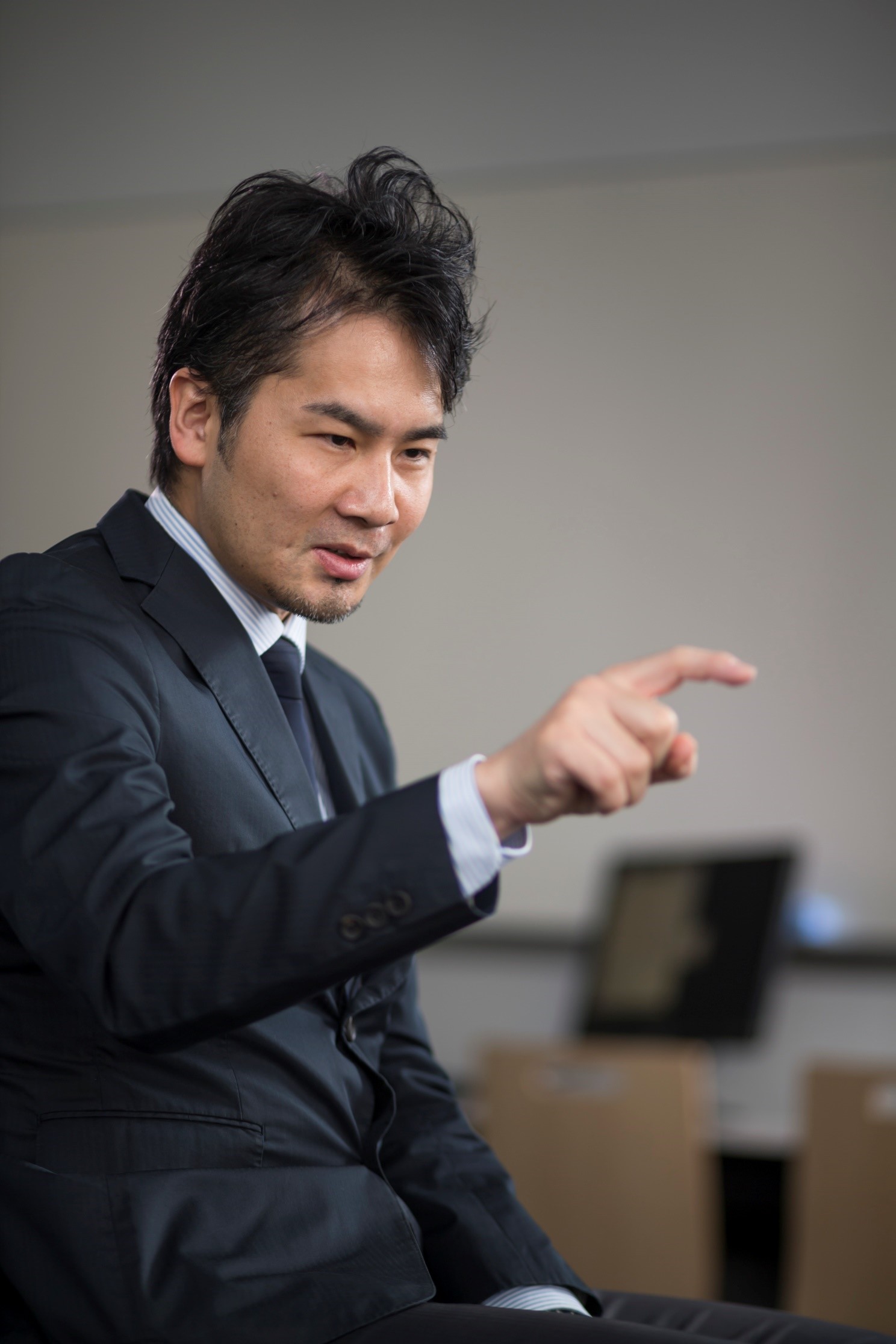 Professor Hiroyasu Iwata
Professor Hiroyasu Iwata
Professor Hiroyasu Iwata obtained his Ph.D. in mechanical engineering from the Graduate School of Science and Engineering at Waseda University in 2002. After serving as lecturer and associate professor, he was appointed professor at the Faculty of Science and Engineering in 2014, and laboratory director at the Global Robot Academia in 2015. Professor Iwata is a member of Japan Society of Mechanical Engineers (Delegate), Japan Society of Computer Aided Surgery (Trustee), Society of Biomechanisms Japan (Secretary), Robotics Society of Japan (Trustee), Japanese Society of Biofeedback Research (Executive Director), Society of Instrument and Control Engineers (Delegate), IEEE, EMBS and so on. Professor Iwata has earned a good reputation in Japan and overseas for his involvement in many cutting-edge research projects under the keyword of human assistive Robot Technology, including rehabilitation assistive RT, medical care assistive RT, sports learning assistive RT, intelligent construction equipment robotics, and RT using new materials. Contact the Iwata Laboratory for further details.
Major research achievements
- M.OKAMOTO,M.KUROTOBI,S.TAKEOKA,J.SUGANO,E.IWASE,H.IWATA,T.FUJIE,“Sandwich fixation of electronic elements using free-standing elastomeric nanosheets for low-temperature device processes” J.Mater.Chem.C,Feb,2017
- H.HAYATA,M.OKAMOTO,S.TAKEOKA,E.IWASE,T.FUJIE,H.IWATA,“Printed high-frequency RF identification antenna on ultrathin polymer film by simple production process for soft-surface adhesive device” Jpn.J.Appl.Phys.,vol.56,no.5S2,pp.05EC01,May,2017
- Ito K, Sugano S, Takeuchi R, Nakamura K, Iwata H,“Usability and performance of a wearable tele-echography robot for focused assessment of trauma using sonography” Medical Engineering and Physics,vol.35,no.2,p165-171,2013
- Iwata H, Sugano S,“Human-robot-contact-state identification based on tactile recognition” IEEE Transactions on Industrial Electronics,vol.52,no.6,p1468-1477,2005
- Iwata H, Sugano S,“Design of human symbiotic robot TWENDY-ONE”Proceedings-IEEE International Conference on Robotics and Automation,p580-586,2009
- Iwata H, Sugano S,“Design of human symbiotic robot TWENDY-ONE”Proceedings-IEEE International Conference on Robotics and Automation,p580-586,2009


